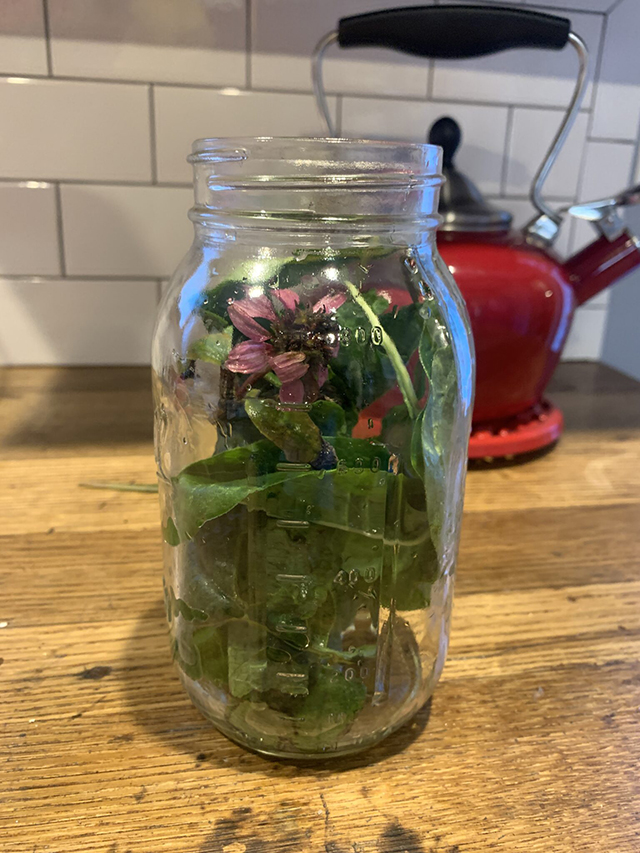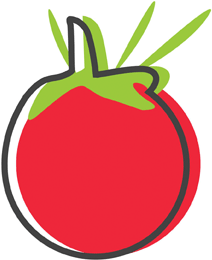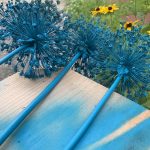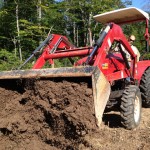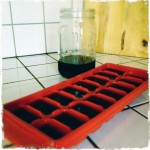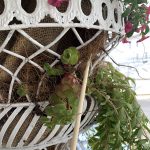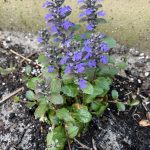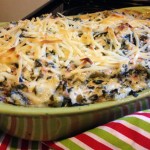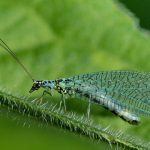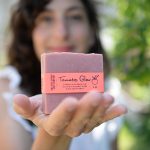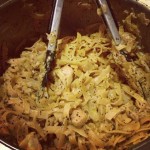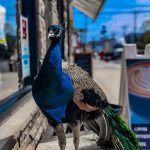Fall Garden Observations and Homemade Echinacea Tea
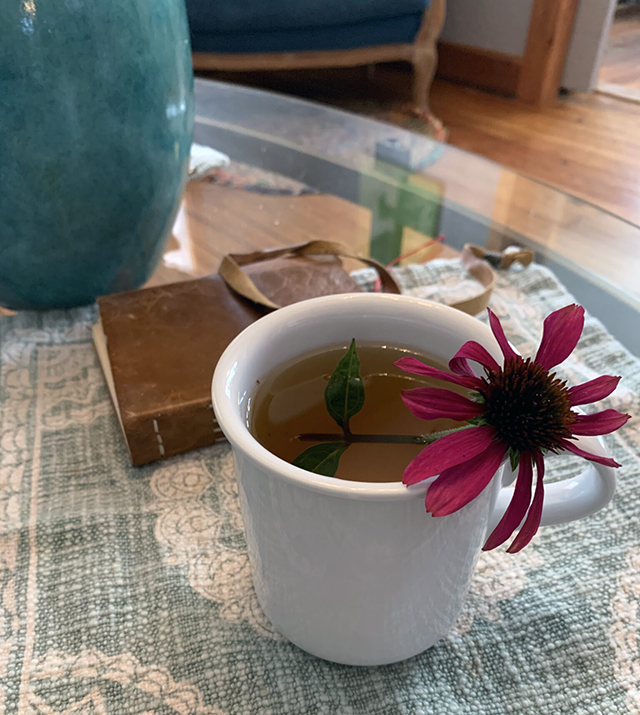
Sip echinacea tea on a chilly fall evening, taking a pause to enjoy a quiet moment.
I’ve been puttering around the garden. There’s so much to do, see, smell and enjoy in the fall. I’ve discovered a landscape of mushrooms under the oak hydrangea and other mushroom villages nestled below the brush. They indicate a healthy garden because mushrooms thrive in rich, organic soil. I’m not a mushroom expert but I take pleasure in investigating the funny little things. With the cool autumn season and consistent rain, the fungi appear to be honey fungus or milk cap. Both are cold-weather lovers and northeast natives. The underside characteristic is a smooth striped pattern. The mushrooms are yellow and light orange to brown. Honey fungus and milk cap are safe to eat and sadly not psychedelic. There are of course many poisonous look-alikes. Unless you’re a mushroom aficionado, enjoy wild mushrooms for their beautiful weirdness, not for nutrition.
I’m out front with some friends having lunch the other day and Juan notices two small birds bouncing through the front garden. At a closer look, we caught sight of a beautiful thing. The birds were also lunching, eating milkweed bug larvae off hardened stalks. These moments of nature are why I cherish gardening.
I thought the birds were a type of finch but later that day, I poked around the internet to learn they are more likely kinglets (maybe golden-crown) or North American vireos.
I need to point out that feeding birds is just one example of why you should not clear out your garden in the fall. Leave half of your perennials as is. What looks like a dead plant is in actuality beaming with life, hosting insects and housing seeds for the birds and other vital garden go-ers. The ecosystem of your garden lives year-round, let nature do its thing.
My neighbor Alex passes by as I’m propagating stonecrop. We chat and he asks what my favorite plant is in my garden. This is the most difficult question! He was looking for recommendations for his own space. I suggested the ever-giving echinacea plant with its vibrant pink flowers, long blooming season and hardiness. I should have guessed his next question, “Have you ever made tea with it?” I felt awkward having to tell him, no actually.
So here I am, with plenty of coneflowers still in the garden, I’m finally brewing homemade echinacea tea. What parts can be used for making the tea? All the parts including the roots! Here is a simple recipe!
Homemade Echinacea Tea
Makes 2 cup
Fresh Leaves – Rinse all plant parts thoroughly. Use 1 cup of fresh echinacea leaves, flowers, etc. Chop for a stronger tea, use whole for a milder version. Boil water and steep for 20 min.
Dried Leaves – Rinse well. Use rope to hang and sun dry outside for two days or dry inside hung in a warm, well ventilated room – about 5 days. Break the plant matter down into crumbles. Use 1⁄2 cup of the dried echinacea in a tea bag or use loose, steep then strain.
Pair with lemon, honey or sage for a multi-layered essence.
Echinacea tea is traditionally associated with medicinal benefits, including supporting the immune system and reducing the duration and severity of common colds. It possesses anti-inflammatory and antioxidants. Use this recipe to stay healthy during the approaching cold and flu season.
For more on edible gardens, visit theglorifiedtomato.com and follow Paula on IG for more – @theglorifiedtomato.
